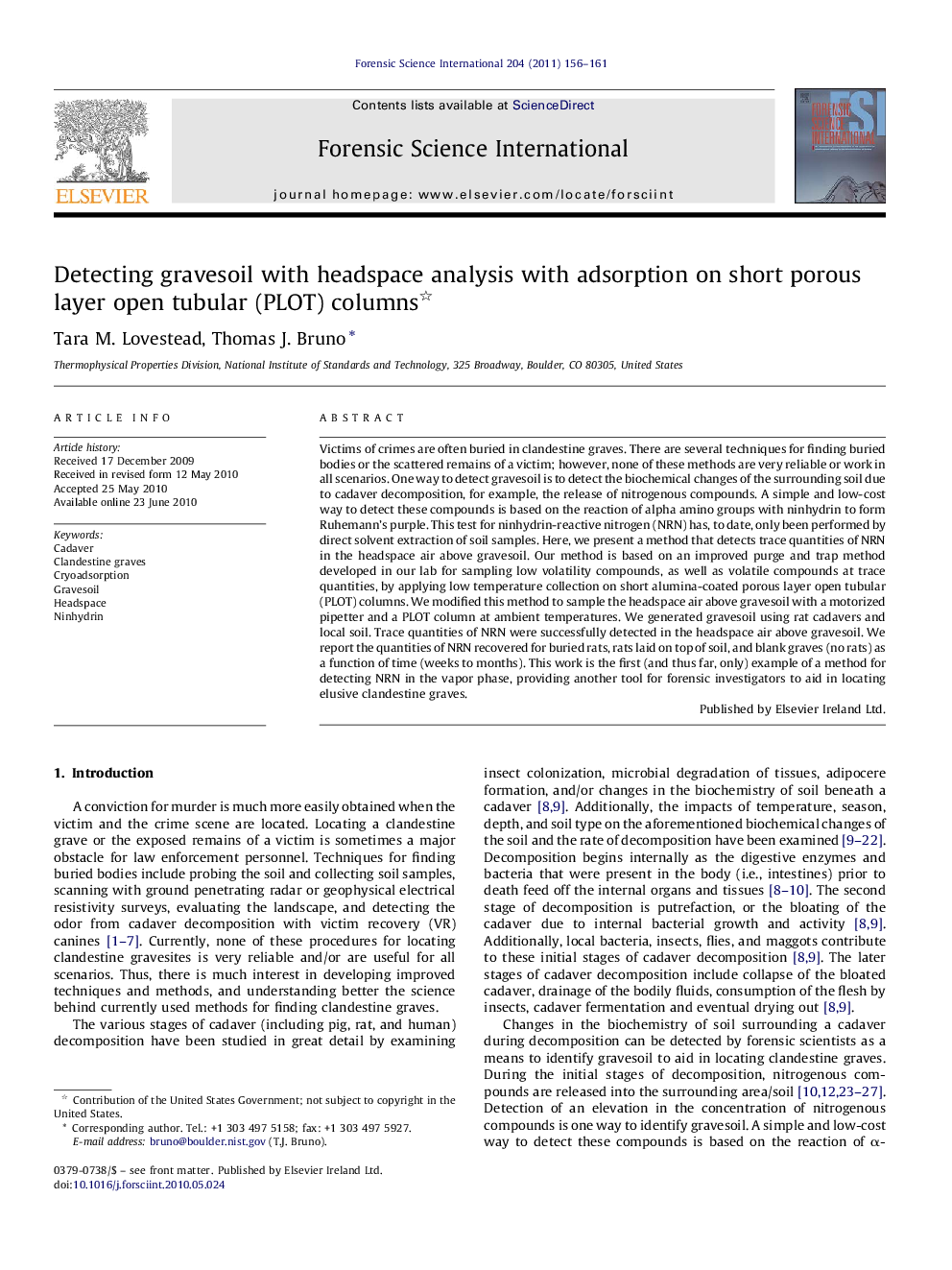| Article ID | Journal | Published Year | Pages | File Type |
|---|---|---|---|---|
| 96976 | Forensic Science International | 2011 | 6 Pages |
Victims of crimes are often buried in clandestine graves. There are several techniques for finding buried bodies or the scattered remains of a victim; however, none of these methods are very reliable or work in all scenarios. One way to detect gravesoil is to detect the biochemical changes of the surrounding soil due to cadaver decomposition, for example, the release of nitrogenous compounds. A simple and low-cost way to detect these compounds is based on the reaction of alpha amino groups with ninhydrin to form Ruhemann's purple. This test for ninhydrin-reactive nitrogen (NRN) has, to date, only been performed by direct solvent extraction of soil samples. Here, we present a method that detects trace quantities of NRN in the headspace air above gravesoil. Our method is based on an improved purge and trap method developed in our lab for sampling low volatility compounds, as well as volatile compounds at trace quantities, by applying low temperature collection on short alumina-coated porous layer open tubular (PLOT) columns. We modified this method to sample the headspace air above gravesoil with a motorized pipetter and a PLOT column at ambient temperatures. We generated gravesoil using rat cadavers and local soil. Trace quantities of NRN were successfully detected in the headspace air above gravesoil. We report the quantities of NRN recovered for buried rats, rats laid on top of soil, and blank graves (no rats) as a function of time (weeks to months). This work is the first (and thus far, only) example of a method for detecting NRN in the vapor phase, providing another tool for forensic investigators to aid in locating elusive clandestine graves.
